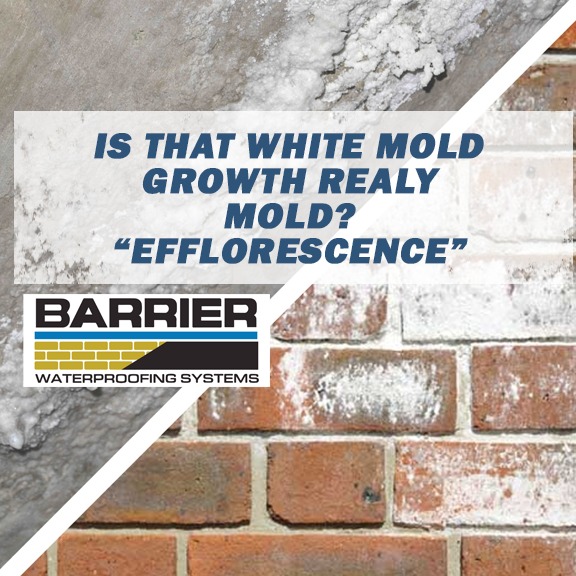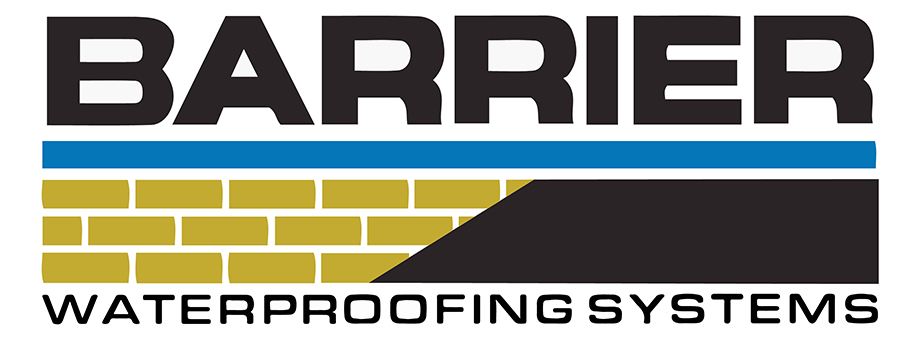Of most of the information that we put out to our readers about the dangers of damaged foundations and poor crawl space condition hazards, we appreciate publishing some good news about the problems you might be experiencing in your home. Today we are going to talk about the white stuff “growing” on the foundation walls of your basement (called efflorescence), and how it might not be the treacherous white mold growth you might have thought it was.
The story begins with porous building materials like concrete. When a material is as permeable as porous concrete, moisture can travel freely into the inside structure through the material. While this can spell trouble for your basement or crawl space foundation, a professional waterproofing or encapsulation installation can keep any moisture damage from occurring.
Efflorescence forms on the walls and floors in a basement as the moisture moves in and brings the dissolving minerals to the surface. It is most often caused when water is trapped in your walls or floors, then evaporates. The same forces causing efflorescence may also be responsible for problems such as rotting timbers and spreading cracks on your concrete walls and floors.
If you are experiencing what looks like white mold growth on the concrete surfaces of your basement or crawl space foundation walls, there may be good news for you! It may not be mold at all. Efflorescence is the name of some (generally safe) mineral buildup that was left behind by evaporating moisture. When moisture is wicked to a surface and evaporated from it, the minerals in the water are left behind. These eventually collect and build up into very hard and difficult-to-remove deposits.
Since there is so much unwanted water evaporated, the soluble salts had no place to go and were left hanging onto the walls, thus causing a white film. A fine powder forms when excess humidity is present in the surrounding causing the water-soluble alkaline salts to leak from masonry to form crystals. When the moisture carrying salts reach the surface, air causes moisture to evaporate, thus leaving behind a type of powdery, white crystallized substance, or chalk-like substance, at the surface, called efflorescence. This water may be carrying salts from building materials to your basement and creating conditions for efflorescence to form. This makes it a priority to remove efflorescence when it is first discovered!
To do this, you can use a stiff bristle brush to scrub the minerals off of the wall’s surface. You can stop the source of the water penetration with professional solutions, but until then, the walls can then be cleaned using an efflorescence cleaner. Once, the efflorescence is removed and the surfaces treated, you should not have any problems encasing walls and installing floor coverings. Coating basement walls suffering from moisture intrusion or effluence does not do anything other than to look better. If left for too long, the efflorescence may require strong, damaging acids or diamond strength abrasive tools to remove it. So, in short, time is of the efflorescence! (We couldn’t resist.)
At the most severe end of the spectrum, the same issues that may cause efflorescence may also cause buckling walls, sagging concrete slabs, and floods in your basement. Efflorescence is often a second-order warning sign for larger problems, too, like leaks in pipes or cracks in your basement windows or walls. Like mold, efflorescence thrives in dank basements and can do significant damage to your home. When you see efflorescence in a house, it usually means that an underlying moisture issue exists.
To solve this problem indefinitely, as well as prevent actual mold growth and a host of other problems for your home’s foundation, give Barrier Waterproofing Systems a call at (615) 257-1060 | (931) 536-1168 today! Schedule a professional exterior waterproofing installation to increase your family’s quality of life in the home for many years to come.
This post was originally published on 8/25/20 and updated on 5/17/2022 for accuracy and a larger scope of information.

